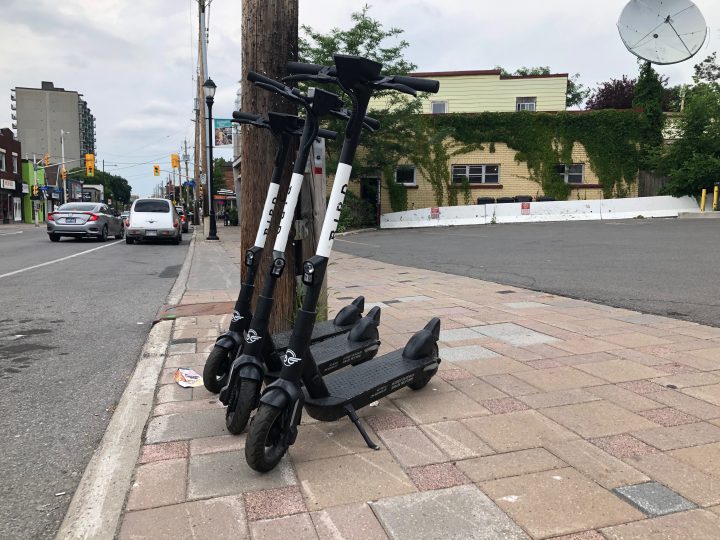The results are in from Calgary’s two-year e-scooter pilot: Calgarians have embraced the micro-mobility option to get around parts of the city.

The city’s transportation and transit committee heard 200,000 users took 1.9 million trips between October 2018 and October 2020. The most popular destination in those trips was to business improvement areas/zones and the most popular reason for use was errands or social gatherings.
“I think Calgarians made this a success,” Ward 6 Coun. Jeff Davison said Wednesday.
“I think when you endeavour to go into these pilot projects, there’s always sort of a certain degree of asking: ‘Will people adopt it? Will they not?’”
The committee heard from representatives of Lime, Bird and Roll, the three e-scooter operators in the city.
Lime Canada’s Jonathan Hopkins said Calgary has the highest rate of use in its network of 130 cities worldwide.
Davison said that fact was “something that I don’t think any of us expected.”

But it’s not all smooth sailing for the micro-mobility method in the city.
City officials found three main areas for improvement: safety, parking and user behaviour.
Geo-fencing was put in place around several popular strips, like Kensington, Mission, Inglewood and Stephen Ave.
E-scooters will require highly-visible identification numbers, to help with reporting of incidents or complaints.

Get breaking National news
READ MORE: E-scooters return to Calgary in spring 2020: Here’s what’s changed
And city administration is recommending that they be allowed to run on bike paths and roadways without painted lines, requiring a bylaw change.
“To address a lot of the concerns in the congested-ness of some of the pathways, we will open up the idea to using scooters on some of those residential roads and other slower traffic area roads,” Davison said.
“Obviously, we’re not going to implement scooters on collectors and major roadways. But in areas where we can we can spread them out safely, that will help alleviate some of the concern that we hear from Calgarians about there’s just too many on the pathways.”

Eau Claire saw the highest increase in use, but also accounted for some of the most complaints to 311.
One area resident told the committee it was a “daily occurrence” to see scooters abandoned or reckless driving of the scooters.
During the pilot, 39 tickets were issued from bylaw officers and 188 parking tickets were issued directly to users via the scooter companies.
READ MORE: Calgary e-scooter injuries: what emergency room doctors are seeing
Analysis of Alberta Health Services (AHS) records showed about one out of 1,400 scooter trips resulted in an ER visit.
The city commissioned a study with AHS and the University of Calgary to look at 75 injuries that required an ambulance. Seventy-one of those injuries were the rider, 20 were admitted to hospital, 32 required surgery within 30 days and the average age of the injured party was 35.
In the first year of the pilot, most of the injuries happened in the afternoon and evening. In the second year, the majority of injuries happened between 8 p.m. and 12 a.m. City officials said a curfew could be put on the e-scooters, disabling them for late evening rides.
Intoxication played into some of the injuries the U of C and AHS studied. Of those suspected of being drunk, 28 had blood alcohol detected. The committee heard that impaired driving tickets can be handed out — and have been handed out in Ottawa — including a penalty of a suspended driver’s licence. Companies can also ban users.

The city will dial back the number of scooters in the city to 1,500 from 2,800.
But scooters could be available year-round, following a model in Edmonton that sees the scooters collected and removed from city streets and pathways when snow removal needs to be done.
The committee voted unanimously to recommend council continue having e-scooters in the city, with operators covering administrative costs via fees. The transportation and transit committee also recommended council have any surplus fees go to safety and infrastructure improvements for the scooters.
City council’s next meeting is Jan. 13, 2021.
Mobility trends
The committee also heard the latest in mobility trends in the city.
In the last month, more Calgarians are on the pedestrian pathways than last year.
With the latest work from home public health order and high schools going online, transit use is down from earlier in the fall. Carshare use is up in November from the month before, with average number of trips per day on Communauto at 169 in November, up from 146 in October.












Comments